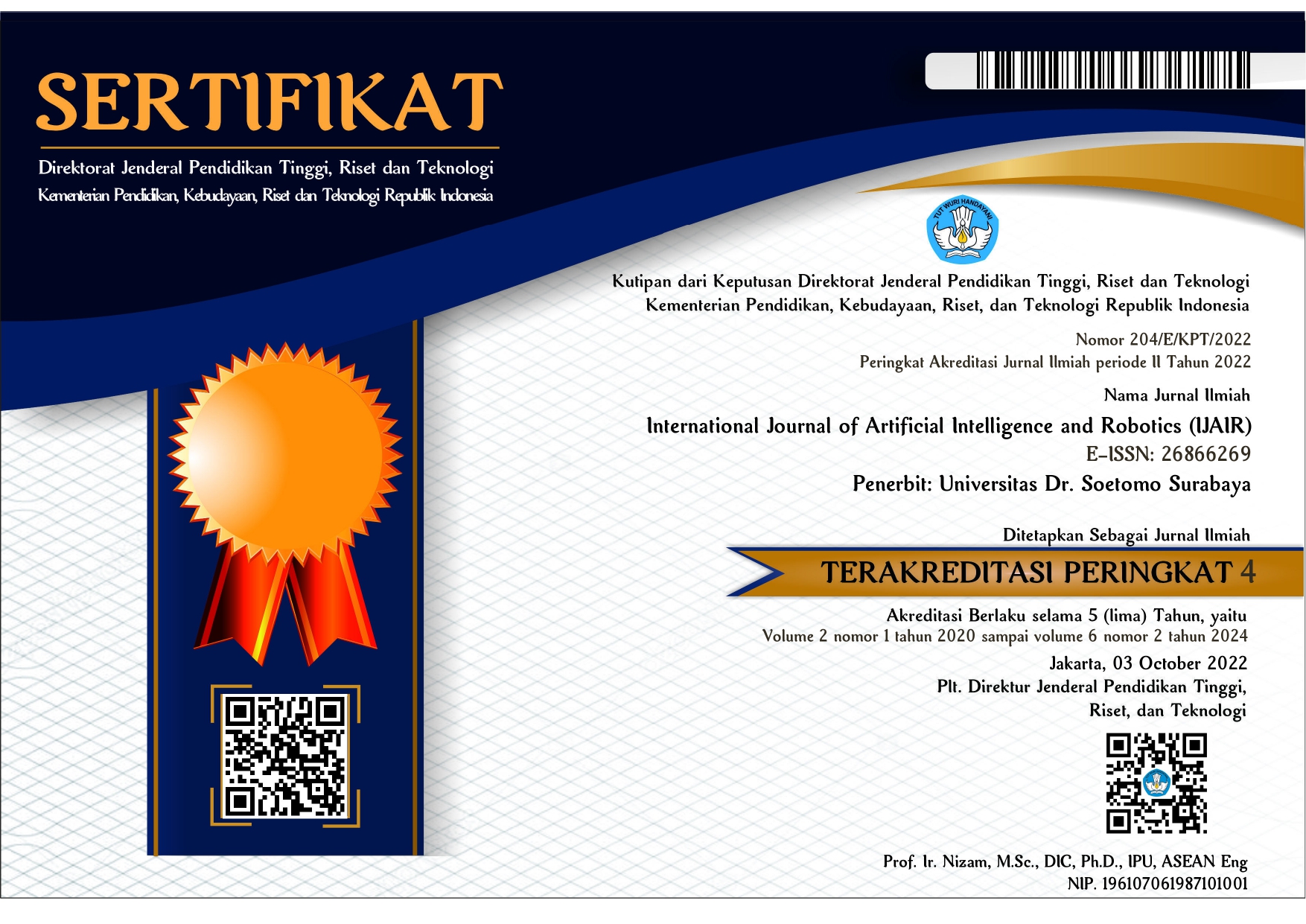Bolt Detection on Railway Rails Using ResNet-50 V1 with SSD Framework
 Abstract views: 16
,
Abstract views: 16
,
 PDF downloads: 13
PDF downloads: 13
Abstract
One of the parts of a railroad track is a bolt. The role of bolts is significant in railway tracks, namely as a fastener between rails. Considering the importance of bolts on railway tracks, every morning, an officer would be assigned to go to the railway tracks to check the bolts. This inspection is done manually on foot or by driving along the railway tracks. Inspection performed manually has the possibility of errors in recognizing the condition of the bolt. In addition, if performed manually, there will be no record of the condition of the bolt. This data will be used to consider whether the condition of the bolt is still suitable for use or needs to be replaced. The formulation of the problem of the research conducted is how to detect bolts on railroad tracks using deep learning, with the purpose of this study to use a model to recognize and be able to detect bolts on railroad tracks. This study uses deep learning with the deep learning method used SSD Resnet 50 V1. The first step that must be taken in the study is to identify the object of the bolt located on the railway tracks. Further research can be carried out. This research has successfully detected bolts on railway tracks. This study used a dataset of 200 datasets in the first experiment and 300 datasets in the second experiment. The model used in the study is the Resnet 50 V1 SSD model, where using 2,000 steps, the precision value is 92.64%, and the Recall value is 64.87%.
Downloads
References
D. A. Lestari and A. A. Mustafidah, “Strategi Perusahaan PT Kereta Api Indonesia (PERSERO) Dalam Meningkatkan Pelayanan Jasa Transportasi Kereta,” Gudang J. Multidisiplin Ilmu, vol. 2, pp. 152–157, 2024.
P. Ardianto, “1.731 Km Jalur Kereta Api Dibangun dan Direvitalisasi di Era Jokowi,” 2024. https://investor.id/business/374987/1731-km-jalur-kereta-api-dibangun-dan-direvitalisasi-di-era-jokowi.
S. Li, "Bolt anomaly detection based on yolov8 and point cloud," in 2024 IEEE 7th Advanced Information Technology, Electronic and Automation Control Conference (IAEAC), 2024, vol. 7, pp. 1918–1922, doi: 10.1109/IAEAC59436.2024.10503788.
Z. Ming, N. Jianguo, L. Xuesheng, and L. Ming, "The safety study of bolt and cable support in shallow roadway," in 2011 International Conference on Multimedia Technology, 2011, pp. 5651–5655, doi: 10.1109/ICMT.2011.6002822.
AGICO GROUP, "What Is A Track Bolt?," 2023.
P. Prabhakaran, S. Anandakumar, and E. B. Priyanka, "Railroad Maintenance Predictor System for Metro Railroad Systems," in 2022 International Conference on Emerging Smart Computing and Informatics (ESCI), 2022, pp. 1–4, doi: 10.1109/ESCI53509.2022.9758349.
D. V. Efanov, G. V. Osadchii, and V. V. Khoroshev, "New Stage in Safety Traffic Control Technologies Development: Digital Railroad Crossing," 2019, doi: 10.1109/RUSAUTOCON.2019.8867700.
Copyright (c) 2025 Helfy Susilawati, Ginaldi Ari, Firman Firman

This work is licensed under a Creative Commons Attribution-ShareAlike 4.0 International License.
Authors who publish with International Journal of Artificial Intelligence & Robotics (IJAIR) agree to the following terms:
-
Authors retain copyright and grant the journal right of first publication with the work simultaneously licensed under a Creative Commons Attribution License (CC BY-SA 4.0) that allows others to share the work with an acknowledgment of the work's authorship and initial publication in this journal.
-
Authors are able to enter into separate, additional contractual arrangements for the non-exclusive distribution of the journal's published version of the work (e.g., post it to an institutional repository or publish it in a book), with an acknowledgment of its initial publication in this journal.
-
Authors are permitted and encouraged to post their work online (e.g., in institutional repositories or on their website) prior to and during the submission process, as it can lead to productive exchanges, as well as earlier and greater citation of published work.














